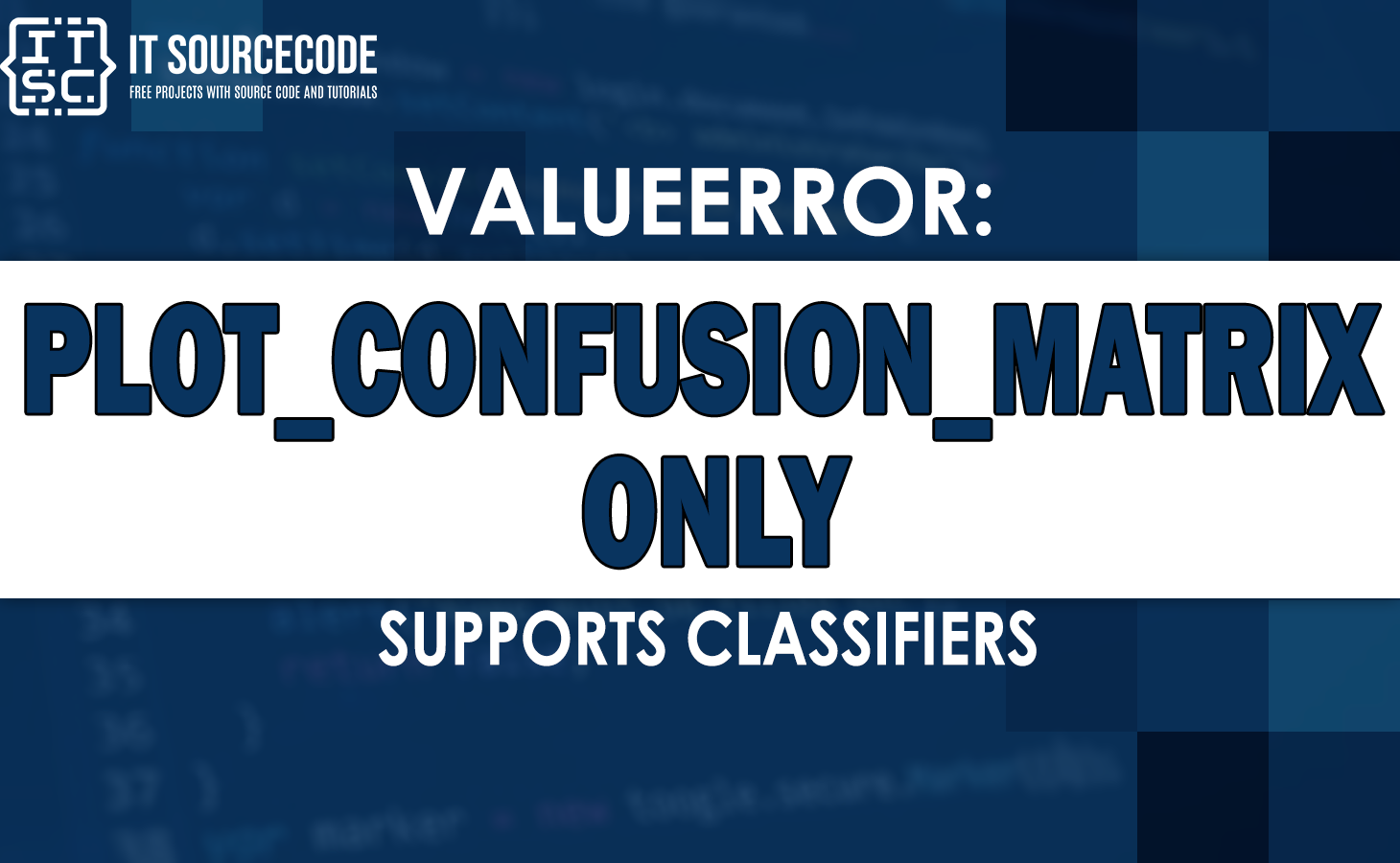Are you encountering a ValueError: plot_confusion_matrix error while working with classifiers in Python? Don’t worry, you’re not alone.
This error typically occurs when attempting to use the plot_confusion_matrix function, and it signifies that the function only supports classifiers.
In this article, we will analyze this error, discuss its causes, and provide you with examples and solutions to resolve it effectively.
So, without further ado, let’s get started!
What Causes the Error?
Before we explore the examples and solutions, it is necessary to understand the common causes of the ValueError: plot_confusion_matrix error.
By identifying these common causes, we can easily fix the issue. Typically, this error occurs due to the following reasons:
- Incorrect Input
- Outdated Library Versions
- Incompatible Data
Now that we have already understood the possible causes, let’s move on to some practical examples and solutions.
How to Fix the Error?
The following are the solutions to solve the error valueerror plot_confusion_matrix only supports classifiers.
Solution 1: Ensuring Compatibility and Correct Usage
To solve the ValueError: plot_confusion_matrix error, you can follow these steps:
- Check Classifier Usage:
- You need to check that you are using a classifier as input to the plot_confusion_matrix function.
- If you are not sure, consult the documentation for the specific classifier or seek assistance from the scikit-learn community.
- Update Libraries:
- Make sure that you have the latest versions of scikit-learn and matplotlib installed.
- You can upgrade them using the following commands:
- pip install –upgrade scikit-learn
- pip install –upgrade matplotlib
- Check Data Compatibility:
- You can check your data if it is proper for classification analysis.
- Make sure that it contains of labeled instances and suitable feature representations.
For Example: Using plot_confusion_matrix with a Classifier
To demonstrate the correct usage of the plot_confusion_matrix function, let’s consider a scenario where you have trained a classification model using scikit-learn’s RandomForestClassifier.
Here’s an example code:
from sklearn.ensemble import RandomForestClassifier
from sklearn.metrics import plot_confusion_matrix
# Create and train the classifier
classifier = RandomForestClassifier()
classifier.fit(X_train, y_train)
# Generate the confusion matrix
plot_confusion_matrix(classifier, X_test, y_test)
plt.show()
In this example, we create a RandomForestClassifier object, train it using labeled data (X_train and y_train).
Then, we use the plot_confusion_matrix function to visualize the confusion matrix based on the predictions on the test data (X_test and y_test).
Solution 2: Ensure Proper Classifier Usage
To resolve this issue, make sure that you pass a classifier object as input to the plot_confusion_matrix function.
If you need to perform predictive analysis, you can use the correct evaluation metrics suitable for predictive tasks instead of the confusion matrix.
For example:
from sklearn.datasets import load_iris
from sklearn.model_selection import train_test_split
from sklearn.linear_model import LogisticRegression
from sklearn.metrics import plot_confusion_matrix
import matplotlib.pyplot as plt
# Load the Iris dataset
data = load_iris()
X = data.data
y = data.target
# Split the data into training and testing sets
X_train, X_test, y_train, y_test = train_test_split(X, y, test_size=0.2, random_state=42)
# Create a classifier object (Logistic Regression in this example)
classifier = LogisticRegression()
# Fit the classifier on the training data
classifier.fit(X_train, y_train)
# Generate predictions on the test data
y_pred = classifier.predict(X_test)
# Plot the confusion matrix
disp = plot_confusion_matrix(classifier, X_test, y_test, cmap=plt.cm.Blues)
disp.ax_.set_title("Confusion Matrix")
# Show the plot
plt.show()
In this example:
- we load the Iris dataset
- split it into training and testing sets
- create a LogisticRegression classifier
- fit it on the training data
- generate predictions on the test data
- then use plot_confusion_matrix to visualize the confusion matrix
- Finally, we display the plot using plt.show().
Additional Resources
The following articles can help you to understand more better about Valueerrors:
- Valueerror: cannot merge a series without a name
- How to Solve the Python ValueError
- Valueerror too many values to unpack expected 3
- Valueerror: attempted relative import beyond top-level package
Conclusion
The Valueerror: plot_confusion_matrix only supports classifiers occurs when attempting to use the plot_confusion_matrix function with non-classifier models.
While this error may initially seem alarming, there are several solutions available to solve it.
Through knowing the limitations of plot_confusion_matrix and following the solutions in this article, you can effectively visualize the performance of your models, regardless of their type.
FAQs
No, the plot_confusion_matrix function is designed specifically for classifiers, not regression models.
Yes, you can customize the appearance of the confusion matrix plot using various parameters provided by the plot_confusion_matrix function.
Alternative visualization methods for non-classifier models include scatter plots, residual plots, silhouette plots, and dendrograms, depending on the specific type of model and task.

